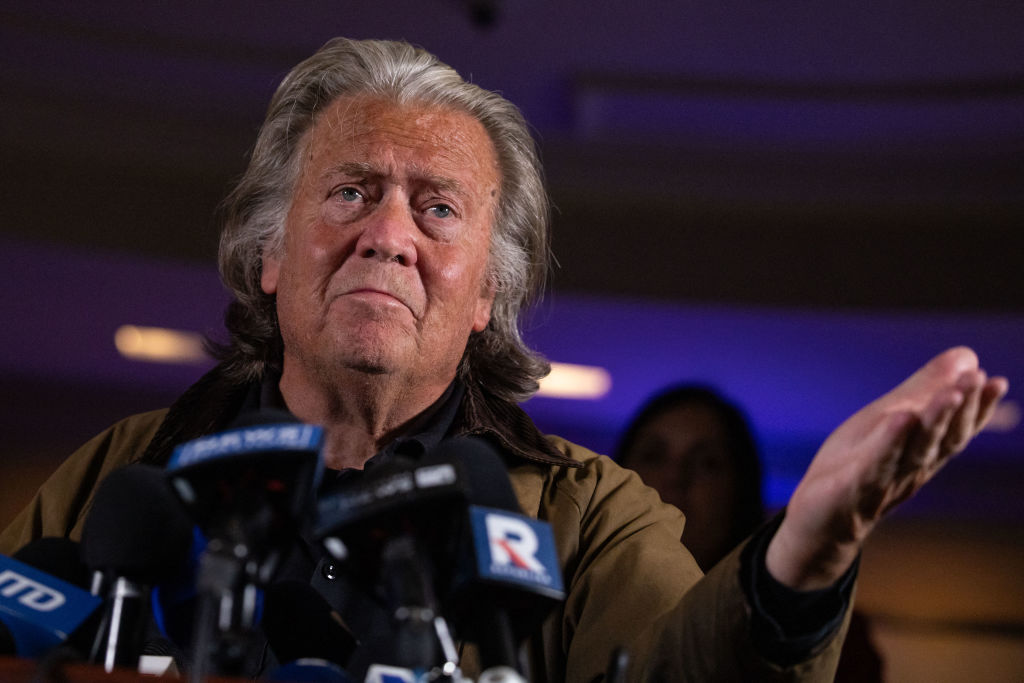Steve Bannon emerged from federal prison this week looking ready to reclaim his role as MAGA’s chief strategist — but, at least for now, nobody seems to be hiring. Donald Trump’s former advisor, fresh from a four-month jail stint for defying a Congressional subpoena, launched straight into a marathon War Room podcast episode that pointed more to his current outsider status than any immediate return to power.
Bannon’s performance followed a familiar playbook: expansive claims about campaign strategy, warnings of election chaos, and positioning himself as the ultimate MAGA soothsayer. He spoke confidently about everything from Elon Musk’s importance to the coalition to Robert F. Kennedy Jr’s endorsement, as if he had been orchestrating moves from a command centre rather than languishing in a prison cell. The reality is far more modest — Trump appears not to have meaningfully engaged with Bannon since 2020, when he notably remarked that “Steve is much better not being involved.” Prior to that, after booting Bannon from the White House in 2018, the then-President observed that “when [Steve] was fired, he not only lost his job: he lost his mind.”
The episode functioned as an audition tape of sorts, with Bannon thread-weaving among various MAGA factions. He hosted Trump-adjacent figures such as Charlie Kirk and Jack Posobiec while carefully avoiding direct claims about any current special relationship with the GOP candidate himself. His prison time has given him a fresh angle, and he’s now positioning himself as someone who can speak to working-class black and Latino males — whom he claims “despise Kamala Harris” — and help move the movement “beyond race”. Simultaneously he is laying groundwork for potential post-election chaos with talk of “preventing state nullification of results”.
The spectacle would be almost amusing if it weren’t so revealing about MAGA’s current power structure. Bannon, once Trump’s populist sherpa who helped shape a real-estate developer into a cultural warrior, now finds himself reduced to hosting a roadshow of secondary players. His immediate pivot to election conspiracy theories upon release suggests less a strategic genius and more a man desperately seeking relevance in a movement which has evolved beyond him.
This all-hands-on-deck rhetorical approach also showed in Bannon’s post-release press conference, where he veered between claiming empowerment following incarceration and making juvenile taunts at Nancy Pelosi, whom he blames for his confinement. When not railing against a weaponised Justice Department, he kept returning to his newfound insights about minority voters, highlighting his interactions with Puerto Rican and Dominican inmates as if collecting DEI credits.
The timing of Bannon’s release, just a week before the election, might seem politically fortunate. But it mainly serves to highlight how far he’s fallen since his days as chief strategist in the West Wing. In 2017, his Time magazine cover as “The Great Manipulator” preceded his first fall from grace with an image-conscious Trump. Today, his responsibilities seem to consist primarily of ensuring his podcast can merit guest appearances from the actual MAGA insiders.
What makes this particularly striking is how it illuminates the broader evolution of Trump’s political ecosystem. The original architects of 2016’s populist revolution — Bannon, Roger Stone, Michael Flynn — have given way to newer, outsider characters such as Kennedy, Musk, J.D. Vance, Vivek Ramaswamy, and Tulsi Gabbard (Jordan Peterson this week dubbed the grouping “Trump’s X-Men”). Bannon’s attempt to rebrand himself as a tribune of minority voters feels stale compared to the more sophisticated online outreach efforts of Musk and Trump’s other campaign mouthpieces.
The Steve Bannon of 2024, though far from a spent force, is ultimately a testament to how quickly political fortunes can shift in the Trump universe. Four years ago, he could reliably present himself as the intellectual architect of a new America First populism. Now, despite his reputation, his chief influence comes from hosting and promoting brighter stars in the broader conservative media ecosystem on his podcast, witnessing the show rather than being at the heart of it. His prison release tour isn’t so much a comeback as a reminder that in politics, as in theatre, timing is everything — and the time isn’t right for Bannon to resume a leading role.











Join the discussion
Join like minded readers that support our journalism by becoming a paid subscriber
To join the discussion in the comments, become a paid subscriber.
Join like minded readers that support our journalism, read unlimited articles and enjoy other subscriber-only benefits.
Subscribe